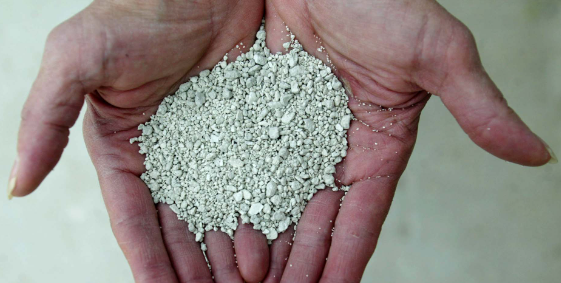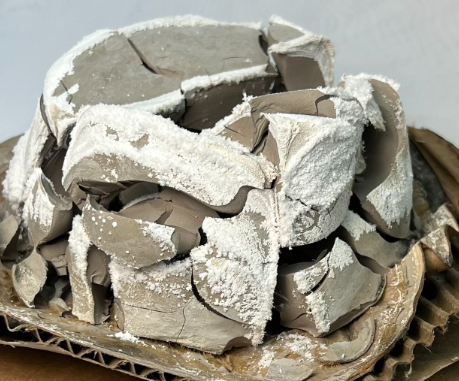- Understanding the Role of Geomembrane Liners in Waste Management
- Innovations in Geomembrane Liners for Water Management
- Geomembrane Liners: A Comprehensive Guide
- The Future of Geomembrane Liners in Civil Engineering
- Geomembrane Liners: Enhancing Landfill Stability
Manager:Alvin Wang
WhatsApp:+62 8983806051
Tel:+86 10-5797-1075
Email:steelwang@okorder.com
Address:3rd Floor, No.2 Building, No.1 Sanlihe Road
What is the difference between bentonite and HDPE?
Bentonite blanket is a crucial component in various construction projects, particularly in environmental engineering and civil engineering applications. When it comes to ensuring the integrity and stability of structures, two common materials often come into play: bentonite and HDPE (High-Density Polyethylene). While both serve essential functions in construction, they differ significantly in composition, characteristics, and applications. For instance, knowing how bentonite differs from HDPE should be done so as to enable one select the most suitable material that will meet a specific project’s requirement.

What is Bentonite?
Bentonite is a type of clay derived from volcanic ash deposits, characterized by its high swelling and absorption properties. In particular, this clay has incredible swelling capabilities because it expands to form a gel-like substance when watered due to its unique structure with montmorillonite, a phyllosilicate mineral belonging to the smectite group forming teeth for hydration. It is thanks to this ability that bentonites can absorb water causing them to swell greatly thus making them useful for waterproofing purposes.
Composition and Properties of Bentonite
The composition of bentonite primarily consists of hydrated aluminum silicates, with varying proportions of other minerals such as quartz, feldspar, and gypsum. However, one feature that defines it from other clays is presence of montmorillonite which gives clay exceptional ability to swell.
One key property of bentonite is its high cation exchange capacity (CEC) which helps it attract & retain cations positively charged within its structure hence making it an effective adsorbent for contaminants & used in different environmental remediation processes like water purification.
Hydrating thus creating a barrier for liquids such as fluids leakage or gas movement are some of the other methods employed when utilizing hydrated bentonites sealing properties thus making it desirable in situations where groundwater pollution should be stopped.
Applications of Bentonite
Bentonite finds widespread use in various industries and applications, including:
1. Environmental Engineering: Bentonite is extensively used in the construction of landfill liners, earthen dams, and groundwater barriers to prevent the migration of contaminants and ensure environmental protection.
2. Geotechnical Engineering: In geotechnical engineering, bentonite is employed as a drilling fluid additive for stabilizing boreholes, lubricating drilling equipment, and controlling formation pressures.
3. Civil Engineering: Bentonite is utilized in civil engineering projects for soil stabilization, tunneling, and trenching, where its swelling properties help maintain excavation stability and prevent soil collapse.
4. Construction: In construction applications, bentonite is incorporated into slurry walls, diaphragm walls, and cut-off walls to create impermeable barriers against water infiltration.
What is HDPE?
HDPE or High-Density Polyethyleneis a thermoplastic polymer renowned for its excellent strength, durability and chemical resistance. Unlike bentonite which occurs naturally as a clay mineral,HDPEn synthetic polymer derived from ethylene monomers through catalytic polymerization process. Among the most versatile plastics available today include HDPE that finds usage across several industries because it has outstanding mechanical properties & resists corrosion better than others do.
Composition and Properties of HDPE
HDPE consists of long chains of ethylene monomers linked by covalent bonds to form a linear polymer structure. Due to this molecular arrangement HDPE possesses high tensile strength making it stiff with high impact resistance; this makes it applicable across wide range uses.
Among the remarkable characteristics of HDPE are low moisture absorption, hence excellent dimensional stability and resistance to degradation due to moist conditions. Additionally, HDPE is good at resisting solvents, alkalis and acids hence fit for applications requiring exposure to aggressive environments.
Additionally, HDPE has a reputation for being flexible and easily processable which allows efficient fabrication through various techniques like extrusion, injection moulding and blow moulding. This adaptability makes it possible to produce complex shapes out of HDPE; thus choosing them as most suitable materials for a variety of components in different products.
Applications of HDPE
In numerous industries, where can we find the use of HDPE?
1. Packaging: Because they are light weight, tough and recyclable, high density polyethylene (HDPE) is often used in manufacturing bottles and containers that are meant for packaging films.
2. Pipe And Fittings: Some preferred applications include water conveyance pipes, infrastructure pipes for fluids such as gas among others. They have long lives before corrosion begins.Thus different piping systems opt for them.
3. Chemical Storage Tanks: A broad range of chemicals needs to be stored with corrosive substance in high density polyethylene tanks since they possess excellent chemical resistance properties which make them inert.
4. Geomembranes : These are applied on containment pads in landfills or secondary impoundments to prevent seepage into the ground water beneath it while containing its contents within a specific area such as wastewater treatment ponds.
Difference between Bentonite and High Density Polyethylene
The following points highlight how different bentonite is from high-density polyethylene (HDPE) in terms of composition, properties and application:
Composition-Bentonite is clay mineral occurring naturally whose main element is montmorillonite while synthetic polymer produced by ethylene monomers polymerization gives high density polythene (HDPE).
Properties-By hydration bentonite forms a gel-like barrier due to its high absorption and swelling capacity whereas HDPE exhibits excellent mechanical strength, chemical resistance and flexibility which provides it with durable and impermeable cover from external forces.
Applications-For the purposes of environmental and civil engineering like landfill liners, earth dams, slurry walls etc. bentonite is used where there is need for an impervious sealage. HDPE however is employed for a variety of uses across different industries including packaging, piping, chemical storage and geomembranes.

Conclusion
To sum up, bentonite and HDPE are two quite distinct materials with their own peculiar properties and applications within construction and engineering.Bentonite serves as a reliable choice in environmental projects by providing tight sealing solutions; conversely High density polyethylene (HDPE) offers improved tensile strength plus better chemical resistance and ability to accommodate several application scenarios. Understanding the differences between bentonite clay vs HDPE is important when choosing material(s) to use on specific project requirements so that they deliver best performance over time."
-
2024-05-15How long does bentonite waterproofing last?
-
2024-05-15What is bentonite used for?
-
2024-05-15What happens when bentonite gets wet?
-
2024-05-15Does bentonite go bad?






